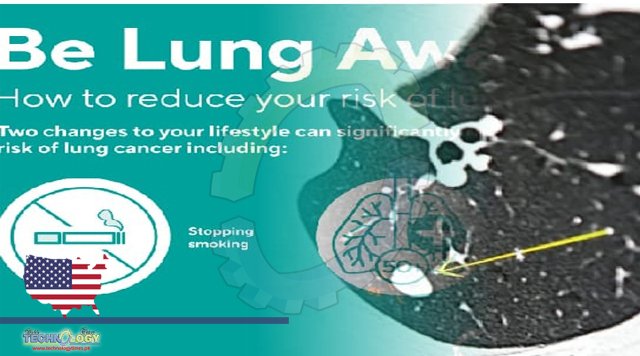U.S. lung cancer screening guidelines miss people who have never smoked, as well as many women and Black people. Expanding outreach and eligibility could help

In late 2014 then 40-year-old Katherine Benson was diagnosed with stage IV lung cancer and told she had less than a year to live. “She was stunned,” says her father Rick Nolan, a former congressional representative of Minnesota. Benson had never smoked and was a young, healthy mother of four. “She’s the last person you would expect to get something like this,” Nolan says. Lung cancer kills about 130,000 people in the U.S. every year—more than breast and colorectal cancer combined. But early detection makes a dramatic difference: if diagnosed in its localized stages, lung cancer has an almost 60 percent five-year survival rate. That number drops to 7 percent with late detection. “Every day in the U.S., there’s a jumbo jet full of people who are dying of lung cancer that could have had early detection,” says Claudia Henschke, a professor of radiology at the Icahn School of Medicine at Mount Sinai in New York City. Indeed, most people at risk of developing lung cancer never get screened for it. Increasing outreach to at-risk groups and expanding eligibility could change that—and save lives. The most recent guidelines from the U.S. Preventive Services Task Force (USPSTF), an independent advisory panel, recommend annual lung cancer screening with a low-dose computed tomography (LDCT) scan. In two large randomized controlled trials, such screening reduced lung cancer mortality by 20 to 24 percent. But to qualify for screening, a person must be 50 to 80 years old, have a smoking history of at least 20 pack-years (a pack a day for 20 years, two packs a day for 10 years, and so on) and currently smoke or have quit within the past 15 years.
These criteria are designed to identify patients who are at the highest risk and most likely to benefit from LDCT scans, according to the USPSTF’s vice chair Michael Barry, a primary care physician at Massachusetts General Hospital. The guidelines were also updated last year from even more restrictive ones set in 2013—increasing the number of people eligible for lung cancer screening from 8.1 million to 14.5 million. Yet Douglas Wood, chair of the department of surgery at the University of Washington and chair of the National Comprehensive Cancer Network’s Lung Cancer Screening Panel, thinks the new guidelines are still too stringent. For one thing, he says, the age maximum is arbitrary—there is “no evidence that once you turn 80, the harms outweigh the benefits”—and overrides what should be a decision made between patients and providers. Wood also disagrees with the USPSTF’s third criterion, arguing that the risk from smoking does not follow a strict time cutoff. “If somebody stopped smoking 15 years ago, and they’re worried about lung cancer, the only way they can be screened is to either start smoking again—or to lie,” he says. Barry dismisses the notion that the USPSTF guidelines could incentivize smoking. In revising these guidelines, “we did, in our simulation models, look at other [cutoff] points” for the maximum age and period of smoking cessation, he says, “and we came up with keeping with the [existing] recommendations.” He points out that the major lung cancer screening trials did not include patients who quit smoking more than 15 years ago, so the USPSTF has followed their lead. “Other guideline groups have other rules of evidence than we do,” he says. But in general, the various guidelines “are certainly more similar than they are different.
Nevertheless, some research suggests that the USPSTF’s eligibility criteria—which help determine Medicare and private insurance coverage leave out a lot of people. According to one estimate published this year in JAMA Oncology, 35 percent of all patients with lung cancer would be ineligible for screening under the new guidelines. For Black women with lung cancer, the figure is about 66 percent. Because of their lower rates of cigarette use, on average, Black Americans, Hispanic Americans and women all experience significant disparities in lung cancer screening eligibility. For example, according to a 2000 estimate, about half of women who get lung cancer worldwide have never smoked—and thus would never have met the screening criteria. Barry says the updated 2021 USPSTF guidelines “preferentially increase the proportion of women, Black people and Hispanic people who are eligible for screening, so we’ve made a pretty big step.” He also emphasizes that the organization cares deeply about equity in screening, adding, “We’re always eager for more evidence to fine-tune the guidelines as we go forward.” A more immediate challenge for screening is that, even among those who are eligible, the actual number getting LDCT scans is very low. In fact, only about 5 percent of people who met the old USPSTF guidelines were screened for lung cancer in 2015. That’s compared with screening rates of about 65 to 80 percent for colorectal, cervical and breast cancer in 2019.
Source: This news is originally published by scientificamerican